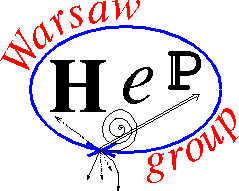SEMINARIUM FIZYKI WIELKICH ENERGII
Dnia 8 grudnia (piątek) o godzinie 10:15, w sali B2.38 odbędzie się seminarium, na którym zostanie wygłoszony referat pt.:
„Jack Steinberger (1920-2020) – in memoriam on the third anniversary of his death.”
Referuje: prof. dr hab. Jan Królikowski (IFD,UW)
Jack Hans Steinberger (1921- 2020) was an outstanding experimental particle physicist. Among his discoveries/ measurements are proof of the three-body decay of a muon (PhD 1949 ), the discovery of the π0 meson, practical implementation of the bubble chambers as a tool for accelerator physics (BNL 195-1963), experimental discovery of the difference between muon and electron neutrinos (Nobel Prize 1988 with L.
Lederman and M. Schwarz), a plethora of precise measurements of the mixing and CPV in the neutral kaon system (Columbia and CERN), precise measurements of neutrino interactions with iron. (CDHS(W) experiment), ALEPH experiment at LEP.
I worked with Jack in the CHSW neutrino experiment during the 1979-1989 decade. I learned from him a lot. At the third anniversary of His death, I would like to give a commemorative talk discussing His experimental heritage, focusing on the not so well known earlier results.
dr hab. Katarzyna Grzelak
prof. dr hab. Aleksander Filip Żarnecki

